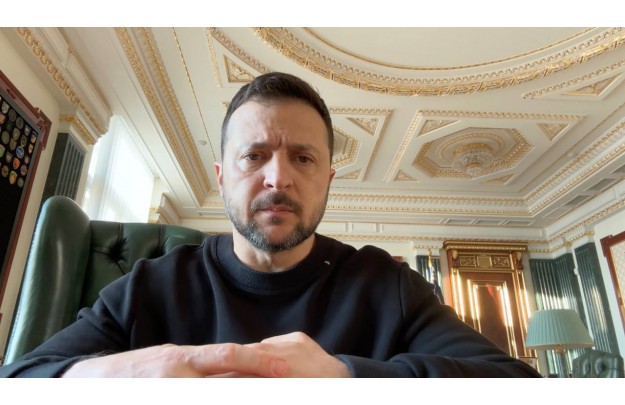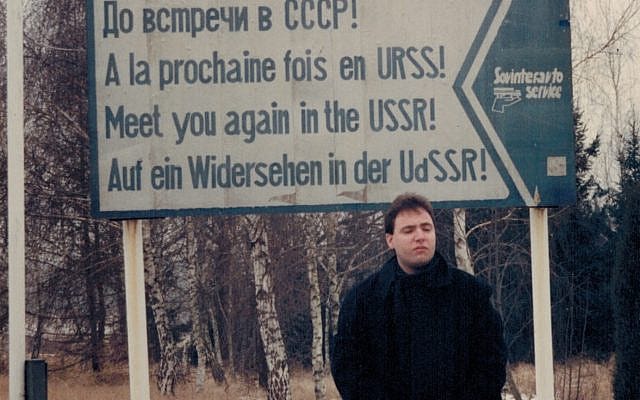Quietly and despite the appeasement concern, many advise compromise before a Trump return emboldens Putin further
Ukrainian President Volodymyr Zelensky‘s term ran out this week, on May 20. While the war with Russia has enabled a quiet extension, it is a fitting moment to take stock of a catastrophe that has been overshadowed by the Gaza war but whose associated risks are far higher.
Support for Ukraine has become a divisive political issue in the United States, as it seems almost anything important will—and so many people are emotional about it. But a sober analysis suggests Ukraine may soon have to seek a deal with Russia.
At a London conference I attended this past weekend on geopolitics, quite senior U.S. and European officials and analysts divided along two clear narratives.
The first is that Russian President Vladimir Putin is a dictator, a Soviet nostalgist and an imperialist with a potentially Hitlerian bent which, if appeased, would whet an appetite that would soon turn to Moldova, the Baltics and perhaps even Poland.
In this narrative Putin must be repelled at almost any cost, meaning that Ukraine must be armed to the hilt and treated as akin to a NATO member. President Joe Biden in public subscribes to this view, and the Republicans mostly hate it.
The opposite narrative says that West erred disastrously in extending delusions of NATO membership to a country whose borders reach within a few hundred miles of Moscow, and that Russia—not just Putin—was left with little choice but to draw a line in the steppe.
Moreover, Russia is unlikely to lose because it has a massive numbers advantage and a determined leadership—backed up by a significant swath of public opinion—which doesn’t mind sacrificing as much treasure and as many lives as it takes to subdue Ukraine. Critically, this narrative says, Russia’s shocking violation of the longstanding taboo on nuclear threats may not be a bluff.
In this narrative, Ukraine would be wise to seek a compromise that would involve signing over much or most of the territory lost in the past decade, since Russia invaded Crimea and began its skullduggeries in (mostly) Russian-speaking eastern Ukraine (much of which is has since seized and annexed after sham local „referenda”).
Intelligent and knowledgeable people—admirals, and diplomats, and academics—thus hold opposing points of view. But all seem to agree on this: If former President Donald Trump returns to power in the U.S., Ukraine will be sold for scrap by the transactional and unscrupulous Putin acolyte in the White House.
And if that happens under duress, with Trump basically supporting Putin, then the result will be a worst-case scenario in which Russia would be tempted to a maximalism where it seizes Kyiv, overthrows (or worse) Zelensky, and installs a puppet regime over the entire country (perhaps „led” by the pro-Kremlin toady—and former Ukrainian president—Viktor Yanukovych).
I am not an appeaser. I favor action for regime change in Iran and I would have imposed far harsher sanctions on Russia. Many of Russia’s banks, for example, have not been de-SWIFTed for fear that the West may pay a price. These half measures are a big reason Russia has not been brought to heel. But I also know that the situation is not as simple as it seems.
The war has killed at least 10,000 Ukrainian civilians and hundreds of thousands of soldiers on both sides, left cities in ruins and damaged the world economy.
Although the Russian economy hums along, its valuable relationship with the West—and with Western investors—has been set back decades. Putin has mutated into a cartoonishly evil dictator who assassinates and jails rivals and critics; he sees himself in a zero-sum rivalry with the democratic West and the liberal world order, determined to use cyber-skullduggeries to sow chaos around the world and get disruptors elected.
Anyone arguing for appeasing him invites comparisons to Britain’s unfortunate Prime Minister Neville Chamberlain, who sold out Czechoslovakia in a vain effort to stop the Nazis from attacking anyone else. Hitler went on to march on Poland, blitz London, occupy France and so on, and diplomacy with dictators was discredited and slotted for derision.
Russia’s imperialism is especially galling considering how much territory its already has. Much of it is ice—but a lot of it is not, and Putin is willing to sacrifice hundreds of thousands of lives to make the world’s largest country by territory slightly larger still.
Steadfast opposition to this is popular in Ukraine, and Zelensky has impressed the world with his impish gruffness, fatigues, and amazing comedian-turned-president story.
But there is another story that has not been much heard because of fears of the Chamberlain comparison.
It would begin by understanding the nature of the borders that so many Ukrainians have lost their lives trying to defend: they are nothing more than the internal borders of the Soviet Union, concocted by Communist apparatchiks who were not players of good faith.
These borders were determined by many things, and certainly ethnicity was one of them. Tajikistan’s borders really did correspond to where the Tajik people lived—to this day it is almost 90 percent Tajik.
But there were other considerations as well, including political payoffs and strategic value and the location of military installations. The Soviets had no interest in enabling the republics to become viable nation-states, so they moved Russians into some of them—including Ukraine—and left a jumble in many places.
Since there was fear that Moldova—which is essentially northeastern Romania—might try to reunite with its mother country, Slavs were moved in and then a slice of Ukraine was appended to it—Transnistria, a restive and violent province ever since Moldovan independence in 1991.
The Soviets also decided to place Nagorno-Karabakh, which long had an ethnic Armenian majority, in Azerbaijan when they carved out that republic, which had never existed before. The result was decades of tension resulting in a series of recent Azerbaijani attacks that caused the enclave’s entire population to flee.And what of Ukraine? Well, consider Crimea, which Russia occupied in 2014—which is when many believe the current war actually began. When Russia seized it, there was basically no fight and the population, overwhelmingly ethnic Russian (thanks to the tsars and Josef Stalin), seemed to welcome the occupiers.
Ukrainian officials today act as if Crimea is some sort of holy Ukrainian territory—but the Russians were taking it back. Crimea, which has a strategic port on the Black Sea, was actually gifted to the Ukrainian Republic from the Russian Republic in 1954 by Soviet leader Nikita Krushchev, who was Ukrainian.
None of these particular borders are sacrosanct. Few borders are, since most of human history is a litany of conquest and migration.
Putin surely prefers to subjugate all of Ukraine, which he does not consider a real country. But what clearly obsesses him—and many other Russians—are the eastern areas of Donetsk and Luhansk and a land bridge to Crimea, which is otherwise an exclave. That swath of eastern Ukraine is valuable, with coal and steel industries, petrochemical plants and fertile soil. Losing it would not be trivial for Ukraine. But also not devastating.
The region also is home to a Russian-speaking majority, and to many ethnic Russians. It is unlikely that its people actually want to join Russia—but that’s mainly because Russia is such an awful dictatorship. In a post-Putin realm, they might.
Indeed, there is an argument that Ukraine may be better off without so many Russian speakers.


















